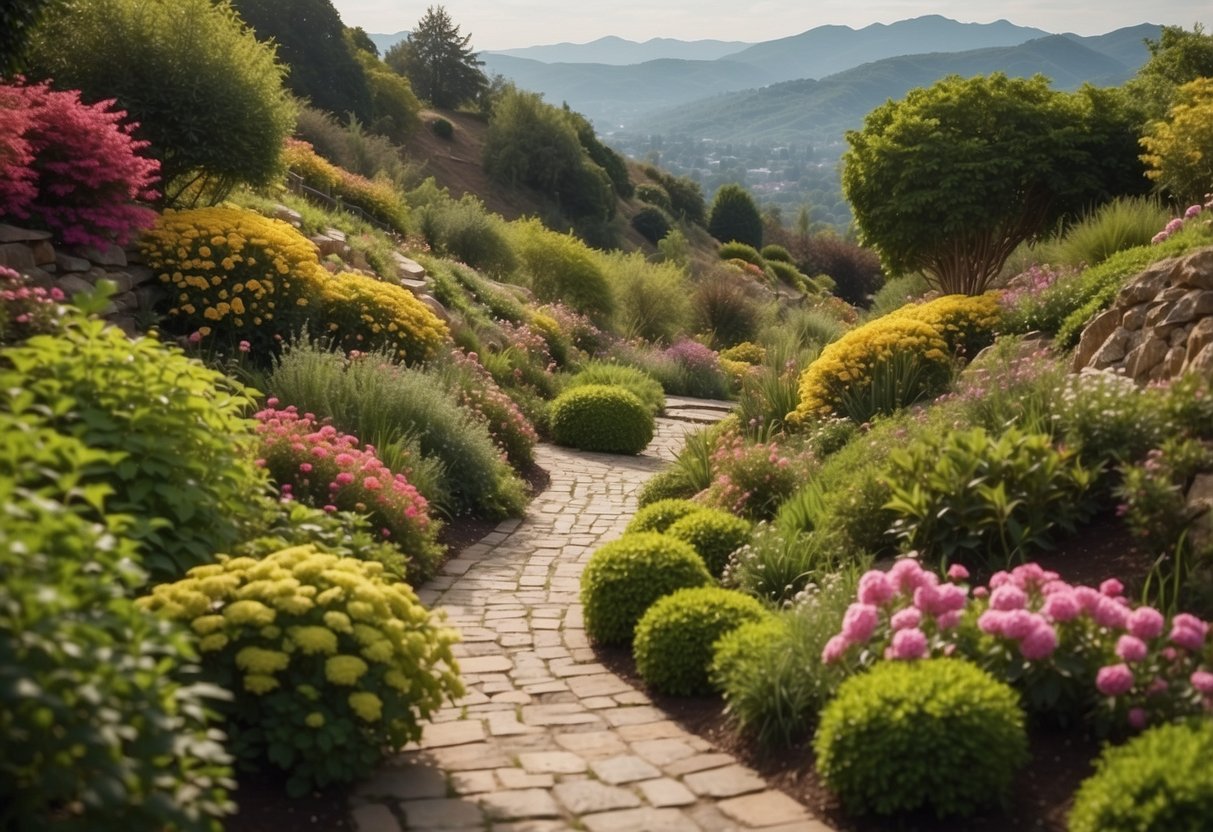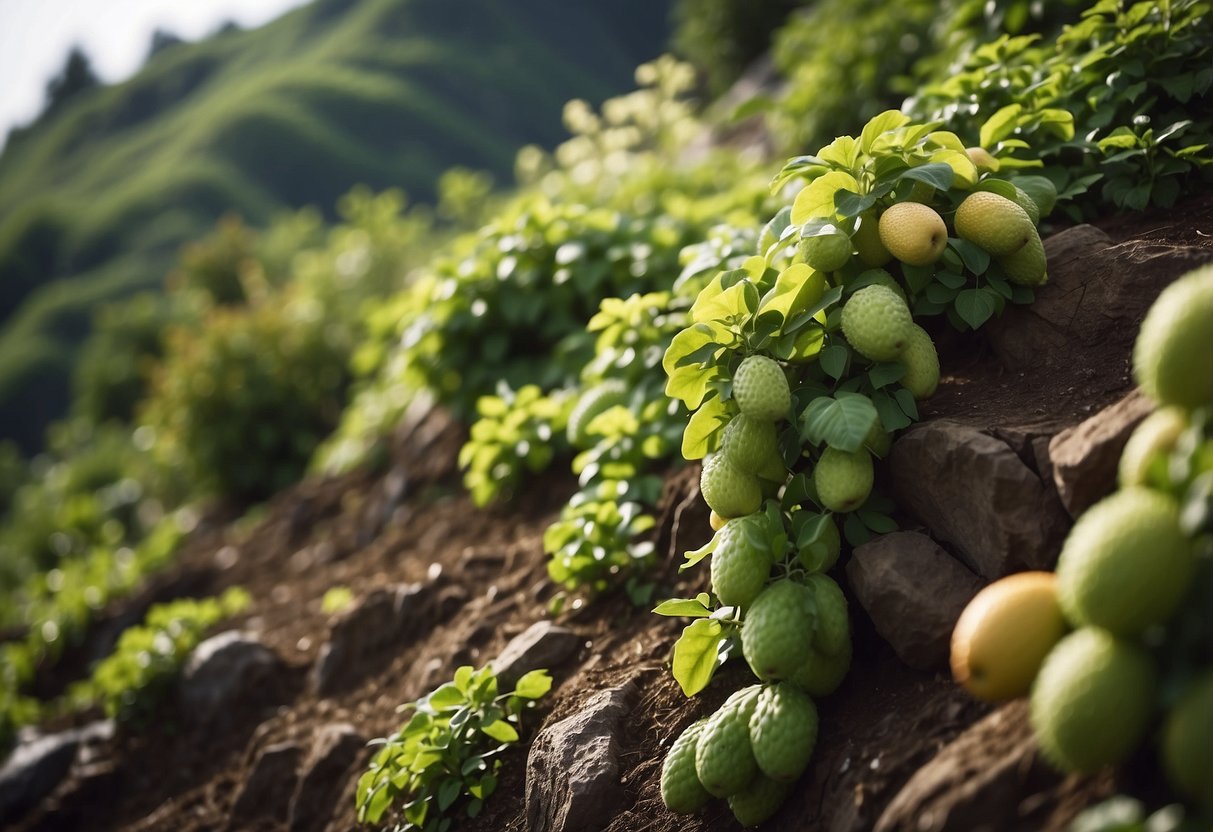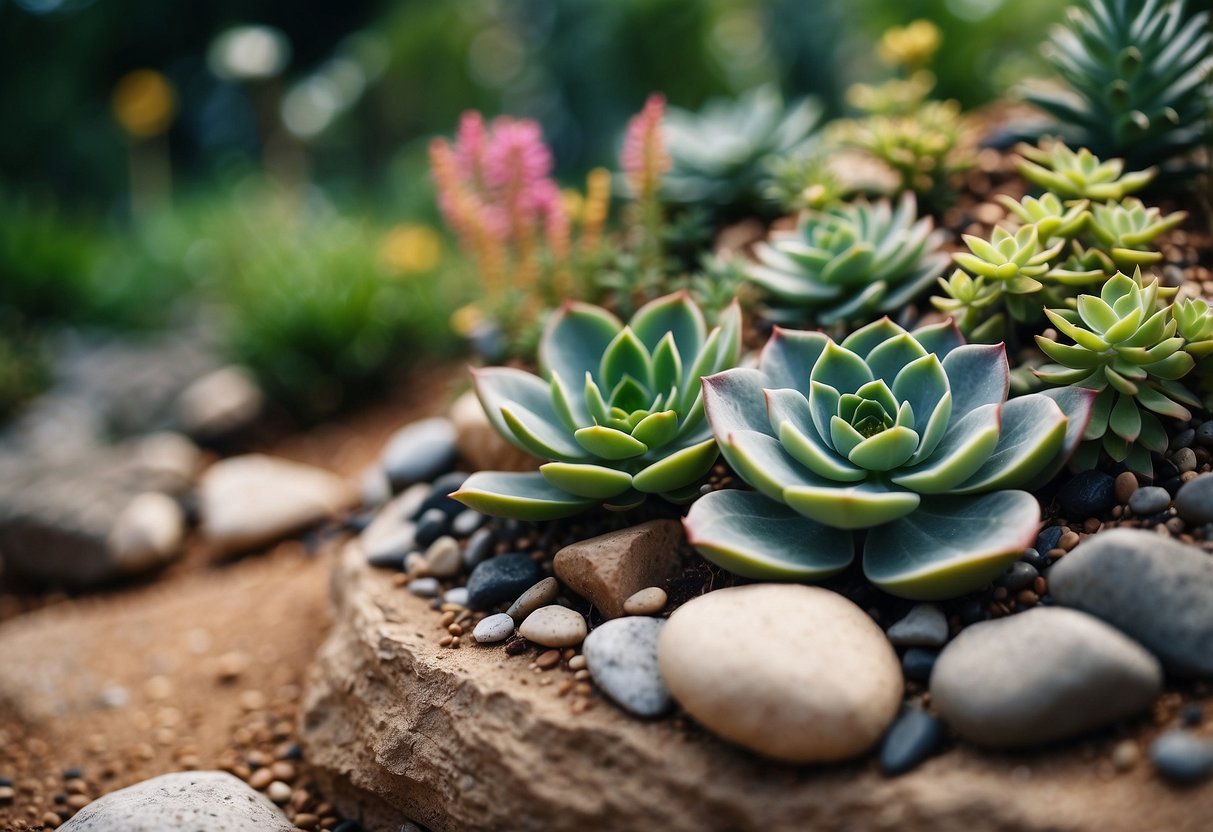Garden Ideas on a Slope: Creative Ways to Green Your Hillside
Gardening on a slope may seem daunting, but it opens up unique opportunities to create a stunning and dynamic outdoor space. Whether you have a gentle incline or a steep hillside, there are various ways to turn this challenge into an advantage. You’ll find that gardening on a slope allows for creative planting and innovative landscaping ideas that are both practical and visually appealing.

By using the natural contours of your yard, you can design a garden that takes advantage of the terrain. This can include terraced flower beds, rock gardens, or cascading greenery that add depth and interest to your landscape. Embracing the slope allows you to develop a space that is not only beautiful but also uniquely tailored to your garden’s natural features.
1) Terraced Flower Beds

Terraced flower beds are a great way to transform a sloped garden into a beautiful and functional space.
By creating levels or “steps” on your slope, you can plant a variety of flowers, giving each row ample sunlight.
Use materials like stone, concrete, or wood to edge each terrace, creating a neat and tidy look.
Terraced flower beds not only add visual interest but also improve drainage and soil retention. Check out these helpful tips for gardening on a slope to get started.
2) Rock Gardens with Alpine Plants

Alpine plants make excellent choices for rock gardens on slopes. They thrive in rocky, well-drained soils and can handle cold weather.
Plants like Dianthus (Pink), Aubrieta (Rock Cress), and Phlox subulata (Creeping Phlox) add a splash of color.
Lamb’s Ears (Stachys byzantina) provide a soft, silvery texture. These plants create a beautiful and low-maintenance garden on a slope. Use a mix of these alpine plants to transform your sloped garden into a vibrant landscape.
3) Waterfall Feature

Creating a waterfall feature on a slope can transform your garden into a serene retreat. A waterfall adds a soothing sound of flowing water and helps make use of the natural gradient.
Choose stones and plants that blend with your landscape. A steep slope allows for a dramatic water cascade.
You’ll need a water pump for your waterfall. Consider hiring an electrician to ensure safe setup for the necessary power supply. This feature can become the centerpiece of your garden, stunning guests with its natural beauty.
4) Stepped Herb Garden

A stepped herb garden is a perfect way to use a sloped yard. You can create terraces by building small retaining walls or using wooden boxes.
These steps give you easy access to different levels of the garden, making it simple to plant and harvest herbs like basil, thyme, and rosemary.
Using stone walls for the terraces adds a rustic touch and blends well with the greenery. Steps also help manage water flow and prevent soil erosion.
5) Wildflower Meadow

Creating a wildflower meadow on a slope can be both beautiful and beneficial for wildlife. Start by choosing native wildflower seeds that are suited to your area.
Mix your seeds with dry sand to make spreading easier. Compress the seeds into the soil by walking on the area or using a roller.
Once planted, water the seeds gently but thoroughly. For steep slopes, consider using matting held with tent-pegs to keep the soil in place.
A wildflower meadow will attract butterflies, bees, and other pollinators, making your garden lively and colorful.
6) Slope retaining walls with plants

Using retaining walls to manage a sloped garden is a great idea.
You can build these walls using materials like wood, rock, or concrete blocks.
The retaining walls help prevent soil erosion and create terraced spaces for planting.
Plants like Siberian cypress and other slope-friendly vegetation add beauty and stability to these walls.
By combining plants with retaining walls, you can transform your sloped garden into a beautiful and functional area.
Adding greenery to the walls will make them look more natural and less harsh.
7) Stone steps with groundcover

Creating stone steps on a slope can add charm and function to your garden.
Use natural stones like bluestone, limestone, or sandstone. Each stone should be securely placed to prevent shifting.
Plant groundcover like thyme or creeping Jenny between the steps. These plants fill gaps and keep soil from eroding.
Groundcover softens the hard look of the stones. It also adds a pop of green that grows over time.
Your garden will look natural and inviting with this combination.
8) Fruit Bushes on Terraces

Fruit bushes are perfect for terraces on a slope. Their roots help to keep the soil stable and reduce erosion. Berries like blueberries, raspberries, and blackberries are great choices.
Planting these bushes in terraced beds will also make it easier to harvest the fruits. The plants will get good sunlight exposure on the terraces, helping them grow better.
Consider using raised garden beds to plant your bushes. This can help with drainage and make maintenance easier. For inspiration, check out these terraced garden ideas.
9) Slope Vegetable Garden Layers

Creating a vegetable garden on a slope can be a fun project. Start by terracing your slope. This means making several flat areas that follow the slope’s natural shape.
Use strong materials like wood or stone to build the terraces. Reinforce the sides to hold the soil in place.
Plant different veggies in each layer. Start with herbs at the top, veggies like tomatoes and peppers in the middle, and root vegetables like carrots and potatoes at the bottom.
Ensure each layer has good drainage to prevent water from washing away nutrients. This way, your vegetable garden will thrive.
10) Succulent garden with rocks

Creating a succulent garden with rocks on a slope is a great way to add beauty to your yard. Succulents don’t need much water, making them perfect for sloped areas.
Use different types of rocks to add texture. Place flat rocks behind low-growing succulents to add height and depth.
You can find some ideas for your succulent rock garden that will make your slope stand out. Use native rocks for a natural look. Combine succulents of various shapes, sizes, and colors for added interest.
Understanding Slope Garden Design

Gardening on a slope can transform challenging terrain into a beautiful, functional space. By identifying the type of slope and knowing the benefits, you can design a garden that thrives.
Identifying Your Garden’s Slope Type
Determining your garden’s slope type is the first step. Slopes can be gentle, moderate, or steep.
- Gentle slopes (less than 10 degrees) are easier to garden on and may need less structural support.
- Moderate slopes (10-20 degrees) might require terracing or retaining walls.
- Steep slopes (above 20 degrees) need substantial support to prevent erosion and ensure stability.
Examine your slope to see if it’s even or has varying angles. This affects plant choice and garden layout.
Benefits of Gardening on a Slope
- Improved Drainage: Water flows naturally downward, reducing waterlogging.
- Increased Sunlight Exposure: Slopes often receive more sunlight, aiding plant growth.
- Natural Erosion Control: Proper planting stabilizes soil, preventing erosion.
- Unique Aesthetics: Slopes offer visual interest with terraces, rock gardens, and cascading plants.
Transforming your slope into a garden enhances your landscape, making it more attractive and functional.
Structural Elements for Sloped Gardens

Designing a garden on a slope requires creative techniques. Using retaining walls and terracing are key methods to manage soil stability and make the most of your space.
Using Retaining Walls
Retaining walls help prevent soil erosion and keep your garden in place. They act as barriers and are vital for taming steep inclines. You can build retaining walls with materials like stone, concrete, or wood. Each material offers different aesthetic and functional benefits.
Stone walls provide a natural look. They blend well with greenery and are durable. Concrete blocks are versatile and can be shaped to fit various designs. Wood adds a rustic charm and can be easier to install.
Staggering these walls can create terraces, allowing you to plant on different levels. Make sure to build the walls at a slight angle leaning into the slope, to increase their stability.
Terracing Techniques
Terracing transforms a steep slope into a series of flat surfaces, similar to steps. This method maximizes planting space and improves access for maintenance.
To build terraces, start with sturdy edging. Materials like wood, stone, or metal can be used. Begin at the bottom of the slope and work your way up, adding soil to create flat areas.
Each terrace should have a slight inward slope to direct water into the soil. This reduces runoff and keeps your plants hydrated. Depending on your slope, terraces can be narrow garden beds or wide platforms with multiple plantings.
Using native plants or ground cover on terraces helps with erosion control and requires less maintenance. Consider integrating paths or stairs between each level for easy movement.
Implementing terraces provides both practical and visual benefits, making your sloped garden an attractive and manageable space.







